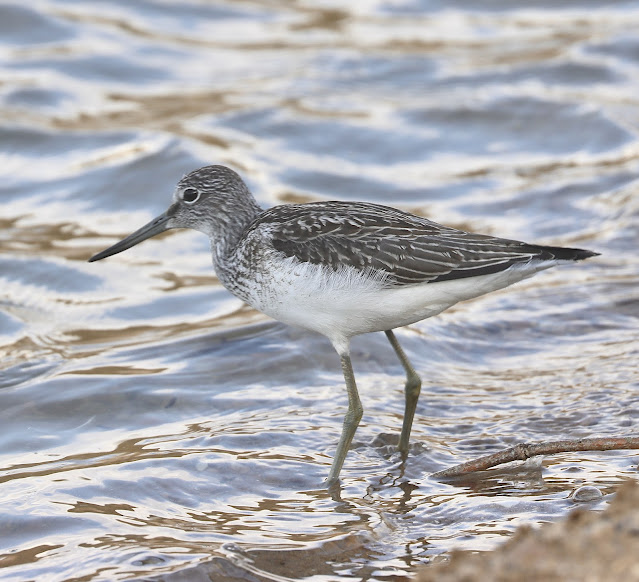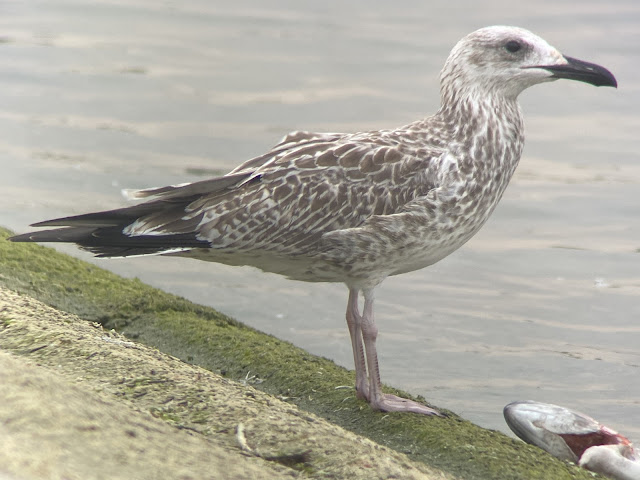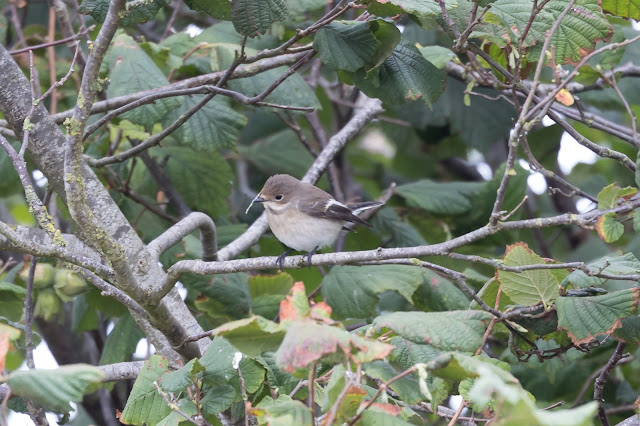 |
| Wood Sandpiper courtesy of Mark Chivers. |
Headliners
August has provided a much-needed change of pace
after the quieter summer months, and we can all now breathe a sigh of
relief that birds are once again on the move across the country. This month has
seen a welcome spread of migrants right across the county, although a distinct
lack of any inclement weather has meant passage has felt quiet on occasions,
there has been a steady stream of common species interspersed with the
occasional rarity.
Headline birds have been a bit thin on the ground
with one of these been sadly only viewed by a single observer.
Glossy Ibis
Potentially a somewhat taken for granted species in
the county after the long staying and wide-ranging birds in 2021, with one
bird present at Otmoor through much of the year and an additional 3
birds ranging across the county in the spring. Having been recorded for the last 3 years
belies its true status pre-2020 with only a handful records between 2000 and
2018, it has historically been a great county rarity.
Two birds were reported on Cassington GP’s from
the 22nd, although they have potentially been on site for up to two
weeks, and both were still present until the 28th at least.
Spotted Crake
The other highlight for the period concerns a bird
that was, sadly, untwitchable to the wider birding fraternity. A bird was
flushed and heard calling several times before landing in nearby vegetation, it
was subsequently searched for, but thick vegetation and lack of open habitat
meant it was unable to be relocated. Unfortunately, due to sensitive nature of
the site the news wasn’t circulated and only the lucky finder got to observe
the bird for a few seconds in flight.
The last spotted crake came during the
lockdown of 2020 when a male was picked up singing by a camera trap set up by
the team at Otmoor.
Waders
The best bird of the period came earlier in the month when a cracking spotted redshank dropped in on the lagoon at Ardley ERF. Unfortunately, this bird didn’t linger long and wasn’t seen the following day.
Spotted Redshank Ardley courtesy of Gareth Casburn
Wood sandpiper had a good showing in the county with 5 birds across two sites through the period. A single bird was at Cassington GP’s on the 15th while a high count of 3 birds were here on the 22nd, equalling the high count from Appleford in 2020. An extremely confiding individual was also present on Radley GP’s from the 22nd until 25th.
 |
| Wood Sandpiper Radley GPs courtesy of Mark Chivers. |
Whimbrel was only recorded from Farmoor with 3 flying over on the 25th . Greenshank records came from at least 7 sites – Ardley ERF (4th, 17th), Appleford (5th), Bicester (11th), Otmoor (14th-15th), Pit 60. Some early records of golden plover came from Otmoor with 2 in stunning summer plumage on the 4th which rose to 4 by the 9th. A single turnstone remained from June on Farmoor until the 4th, whilst 4 birds arrived on the 18th with an adult and 3 juveniles, and one adult was present again on the 25th.
 |
| Black-tailed Godwit courtesy of Mark Chivers. |
Black-tailed godwit also had a good showing across the county with records of mostly singles and pairs from at least 6 sites – Appleford (9th, 25th-28th), Grimsbury (14th), Farmoor (16th, 23rd and 25th), Little Wittenham (15th) and Pit 60 (23rd). A magnificent flock of c60 Bar-tailed Godwit were seen flying around Farmoor on the 25th probably brought in by inclement weather, a fantastic record.
 |
| Greenshank courtesy of Alan Dawson |
As is typical, the bulk of our smaller wader records
came from Farmoor. A single sanderling was on Farmoor on
the 1st and it probably remained until the 4th, whilst
another lone bird was recorded on the 23rd until the 25th.
Single ringed plover were
recorded from Farmoor on the 4th, 11th 14th-16th
and the 22nd-23rd. While a group of 5 were here from 25th
until the 28th at least. Little ringed plover were present
here on the 2nd until the 5th, with a new bird on the 11th
and again on the 15th while 2 juveniles were present on the 17th.
Juveniles were also recorded from Appleford (7th), Ardley (17th)
and Grimsbury (21st). Dunlin were recorded on Farmoor
throughout the month with a maximum of 2 present from the 1st –
23rd. 2 Two birds were also present on Appleford on the 7th
with possibly the same birds present until the 23rd.
 |
| Ringed Plover courtesy of Caroline Rhymes Walker |
Common sandpiper were recorded from at least 8 sites throughout the period mostly relating to single individuals. A maximum count of 10 came from Farmoor on the 15th with Appleford hosting a maximum of 6 on the 23rd. Green sandpiper were much wider spread with at least 11 sites hosting at least one bird, numbers of birds built through the month with high counts of 17 from Ardley (17th), 12 on Appleford (10th) and 13 on Bicester (4th). Redshank were only recorded on two sites outside of Otmoor with 4 on Farmoor on the 1st and singles on 8th and 11th whilst Pit 60 hosting one on the 15th.
 |
| Green Sandpiper courtesy of Bryan Manston |
Gulls
& Terns
A single black tern was the only real rarity to speak
of. One was recorded at Sonning eye GP’s on the 22nd with
presumably the same bird still present on the 26th in what has been
a poor showing of this species so far this year.
A very showy juvenile Caspian gull was present on Farmoor
from the 15th- 18th, a repeat of last year’s
confiding juvenile that gave local laruphiles a great opportunity to get up
close and personal with this species. Grimsbury reservoir hosted a
single Mediterranean gull on the 6th while at least 2
juveniles were observed on the 9th, none were apparently recorded
from Farmoor throughout the period.
 |
| Juvenile Caspian Gull courtesy of Isaac West |
Common tern numbers built throughout the month with
up to 20 individuals recorded on the 12th with several juveniles
present in this number. These had largely cleared out by the end of the month.
Good numbers of Yellow-legged gull continued to be recorded from Farmoor
with a maximum count of 53 in the gull roost on the evening of 3rd,
whilst double digits continued to be recorded during much of the month. At
least 4 other sites recorded yellow-legged gull, albeit in much smaller
numbers.
Wildfowl
etc
The July black-necked grebe remained at Otmoor
until at least the 5th after which no confirmed sightings were
reported, with potentially the same juvenile relocating to Farmoor on
the 15th until at least the 25th. A single Garganey
was reported from Otmoor on the 6th
 |
| Black-necked Grebe courtesy of Trudi Rowland |
Ruddy shelduck continued to be recorded
at Otmoor until at least the 20th and occasionally two birds
were reported. A single bird was recorded from Little Wittenham on the 6th-7th.
Mandarin were recorded exclusively from Sonning eye GP’s with a
maximum of 6 birds on the 23rd and were recorded here throughout the
month.
Only one quail record was received with 2
males singing in cereal fields near Eaton Hastings on the 7th,
in what has been poor year for quail records.
Egrets,
herons etc
Cattle egret continued where they left off the previous
month with birds frequenting Otmoor and Pit 60 regularly throughout August. An unprecedented count of 45 birds came from Otmoor between
18th-19th with regular counts of between 20-30 throughout
the month, their status as a breeding species looks to be well established. Birds
began to move around more through the month with 4 additional sites logging
sightings – Stratfield Brake, Blenheim, Brighthampton and Farmoor.
 |
| Cattle Egrets courtesy of Steve Beasant |
Two great bustard proved harder to pin down in Letcombe
Basset when both were flushed again on the 1st. Both were
eventually tracked down and seen well in the same field on the 5th
until the following day, in what seems set to be an annual occurrence within our
counties borders.
 |
| Great Bustards courtesy of Geoff Dymott |
Great white egret were recorded from their usual locations in Pit 60 (11th, 18th & 26th) and Blenheim (4th & 30th). Whilst 2 birds were recorded on Cassington GP’s on 15th and 22nd, 2 seen in flight over Port Meadow probably refer to the same birds commuting between feeding grounds around Oxford. A single bird was unusually observed on Farmoor causeway, and another single was recorded at Stratfield Brake. Our local Cranes continued at Otmoor with a single juvenile successfully fledged for a 2nd year running, with both adults and juv seen regularly in flight. The 2nd pair of adults were reported on the 7th and hopefully points to more pairs nesting next season.
 |
| Great white Egret courtesy of Gnome |
Passerines
With so many pied flycatchers on the move around the country and surrounding counties it would have been criminal for Oxfordshire not to get in on the action. Two female type birds came on the same day at opposite ends of the county with one in a lucky observers garden on the 22nd in Burford, whilst the other showed extremely well in Cholsey from the 22nd – 23rd.
 |
| Pied Flycatcher Cholsey courtesy of Alan Dawson |
 |
| Pied Flycatcher nr Burford courtesy of Dave Morgan |
A single observation of Firecrest came from Aston Rowant on the 24th. Whinchat were recorded from 9 sites around the county with singles recorded from Ardley (21st-22nd), Bicester (24th), Moreton (24th), Keen edge ferry (26th) & Appleford (30th). Multiple birds were recorded from Devils punch bowl with 4 on the 20th, Lark hill with 2 on 11th and 17th and 2 on Aston upthorpe on the 29th. A great count of 10 came from Otmoor on the 24th with birds present in various numbers throughout the month.
Wheatear were recorded from 16 sites with records
mostly relating to single birds. Multiple birds were recorded from several
sites with max counts of 4 recorded from Aston upthorpe (1st)
and Upper Heyford on the 29th. The first returning tree
pipit was logged from Southfield golf course on the 21st
with a second bird on the 28th both picked up in flight,
interestingly the only other record also came from Oxford with one over Aston
eyot on the 29th. Yellow wagtail were observed from at least 11
sites with the maximum count of 85 birds coming into roost on Otmoor on the 19th,
other double-digit counts came from Appleford (26th), Port meadow
(22nd & 23rd) and Moreton (24th). A Flava
type female bird was also recorded from Port meadow on the 23rd.
 |
| Female Redstart courtesy of Geoff Dymott |
Redstart continued to move through the county with at least 13 sites logging sightings. Most records related to multiple individuals with a maximum count of 5 recorded on Otmoor on the 6th and 5 recorded Gramps hill on the 8th. An unseasonable record of 6 crossbill came from Horley on the 8th. Whilst a great count of 200 corn bunting came from Weathercock hill on the 9th.
 |
| Reed Warbler courtesy of Anna Marlow |
 |
| Spotted Flycatcher courtesy of Alan Dawson |
Raptors
Its been a great month for picking up a local Osprey on
passage through the county, with up to 5 individuals passing through in August.
As is typical, most of the records came as single observer flyovers. One individual
at Farmoor on the 2nd remained until the at least the 6th
and a record of one on the 8th probably relates to the same bird. Another
bird was here towards the end of the month on the 28th, with flyover
records from Chinnor (5th), Wolvercote (11th)
and Waterstock (16th).
 |
| Osprey courtesy of Ewan Urquhart |
One record of Honey-buzzard came from Gallowstree common
on the 14th typically a brief sighting from a single observer. A
very early Merlin was picked up at Lark Hill on the 10th,
with possibly the same juvenile/female type was at Childrey Field on the
21st of the month. Another disappointedly brief bird came from Farmoor
in the form of Short-eared owl when one was seen perching on a post
by the entrance before flying off.
Hobby were recorded from at least 9 sites around the county with multiple birds recorded at Farmoor (17th) and South leigh (29th) with up to 4 at each. Marsh harrier continued at their usually spots, namely Otmoor and Pit 60 with up to 4 and 3 respectively through August. Additional records came from Gramps hill (8th) and Churn (24th & 26th).
 |
| Courtesy of Bryan Manston. |
Look ahead
September should hopefully bring
with it some more intensity in passage migrants and there are still a few
expected waders yet to be recorded that typically turn up on an annual –
biannual basis. Expect at least red knot, bar-tailed godwit and ruff,
with September also been a good month in recent years for little stint whilst
it feels we are well overdue a curlew sandpiper.
On the rarer side of things September
has as recently seen purple heron grace our county, with the elusive
individual frequenting Blenheim for a couple weeks in 2021. With the recent
individual at Weston turville in Bucks it could very well turn up
somewhere within the counties borders this month. Wryneck are also
pretty reliable birds to rock up somewhere in the county this month with the last
3 years producing one in September and 6 out of the last 8 years.
Our last records of both species of
phalarope came in September with the last grey phalarope coming in 2018 with
one at both Sonning eye GPs and another Grimsbury reservoir. In September
2017 the county was blessed with both red-necked and grey
phalarope with the extremely confiding red-necked phalarope pleasing
the small crowds at Farmoor.
Who knows what September 2022 will bring?
Either way I will be hoping for a bit of a break from this record-breaking
drought and maybe just the odd rarity in between!


Lovely write-up Conor, thanks.
ReplyDelete